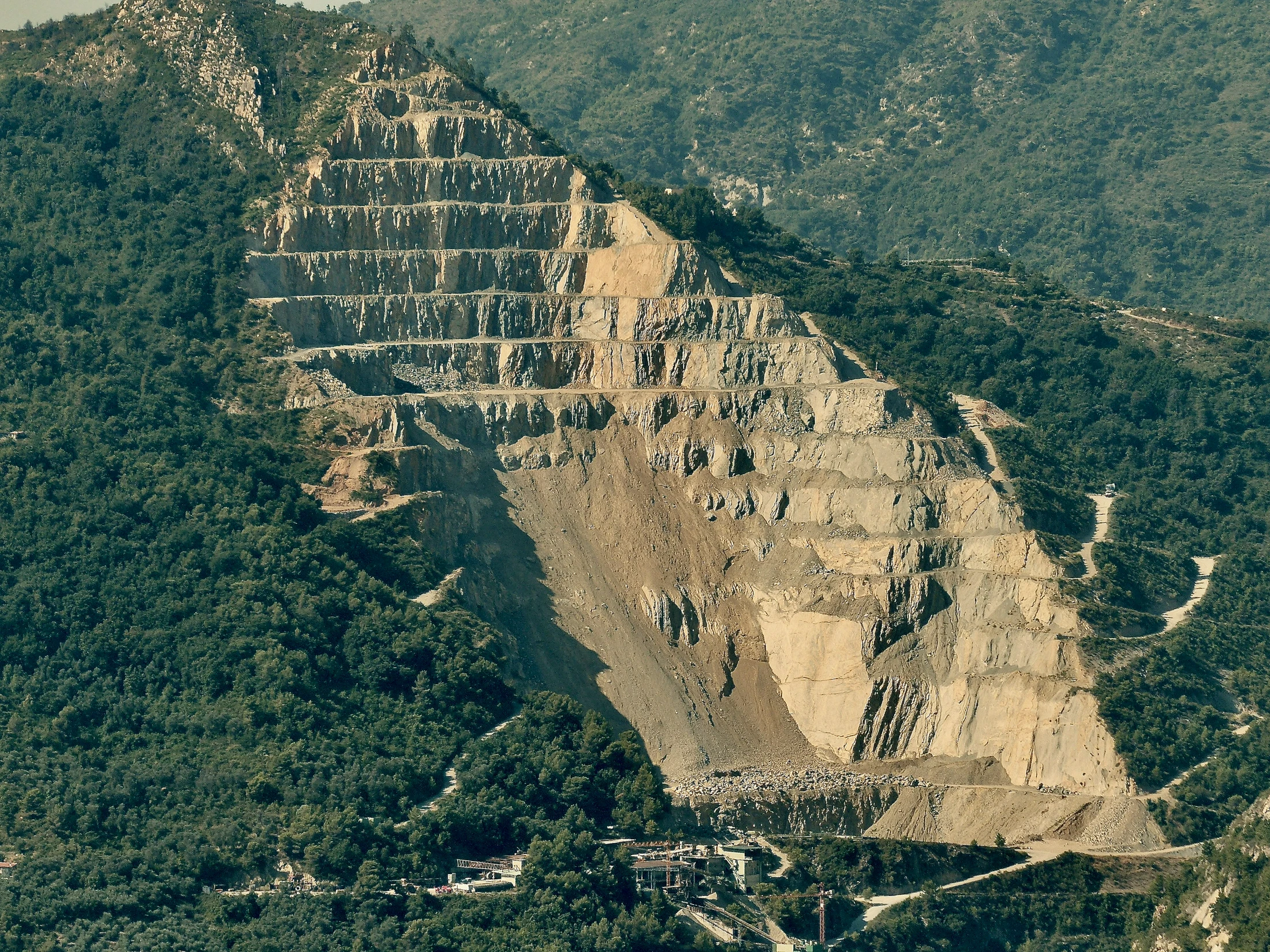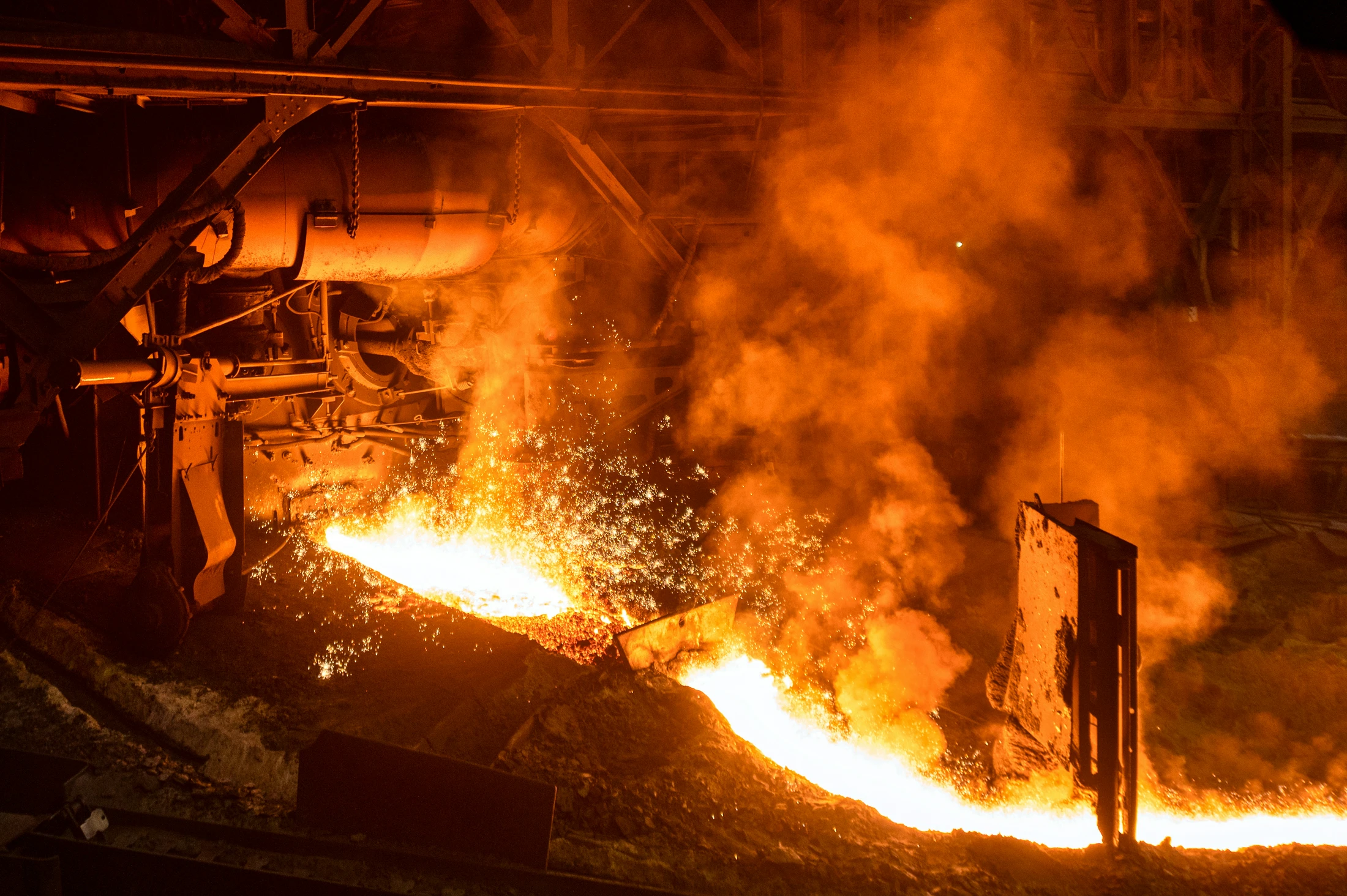Concrete Is
The Most Destructive Material on Earth.
The Guardian, 2019
Concrete Is Really Bad.
It contains cement, which causes 8% of the man-made CO2 emissions worldwide.
It requires coarse sand, which is becoming scarce.
After water, it is the most widely used substance on the planet.
This needs to change.
It Starts With Destruction.
The quest for concrete begins with the destruction of mountains. Explosive blasts are used to extract limestone, leaving behind landscapes that are scarred and unrecognizable. What were once majestic peaks become barren and desolate quarries.

It Continues With the Toll of Transport.
After extraction, the heavy, voluminous limestone rocks are transported to processing plants. This involves fleets of trucks, whose engines emit significant amounts of greenhouse gases, contributing to air pollution and environmental degradation.

Then Massive Amounts of Waste Need to Be Burned.
Turning limestone into cement requires extreme temperatures of around 1,450° C. Achieving such heat demands a massive amount of energy, often derived from burning fossil fuels or industrial waste, which releases enormous amounts of carbon dioxide.

And Finally, You Can’t Defeat Chemistry.
The intense heat breaks the chemical bonds in limestone, leaving behind calcium oxide (quicklime), a key ingredient in cement. However, significant amounts of carbon dioxide (CO₂) are released as a byproduct. This chemical process is fundamental and cannot be altered.


8%
of global man-made CO₂ emissions
come from cement production.
This makes the concrete industry one of the largest contributors to climate change.
The resulting impacts include severe floods, droughts, and extreme weather
conditions, endangering millions of people and animals worldwide.
